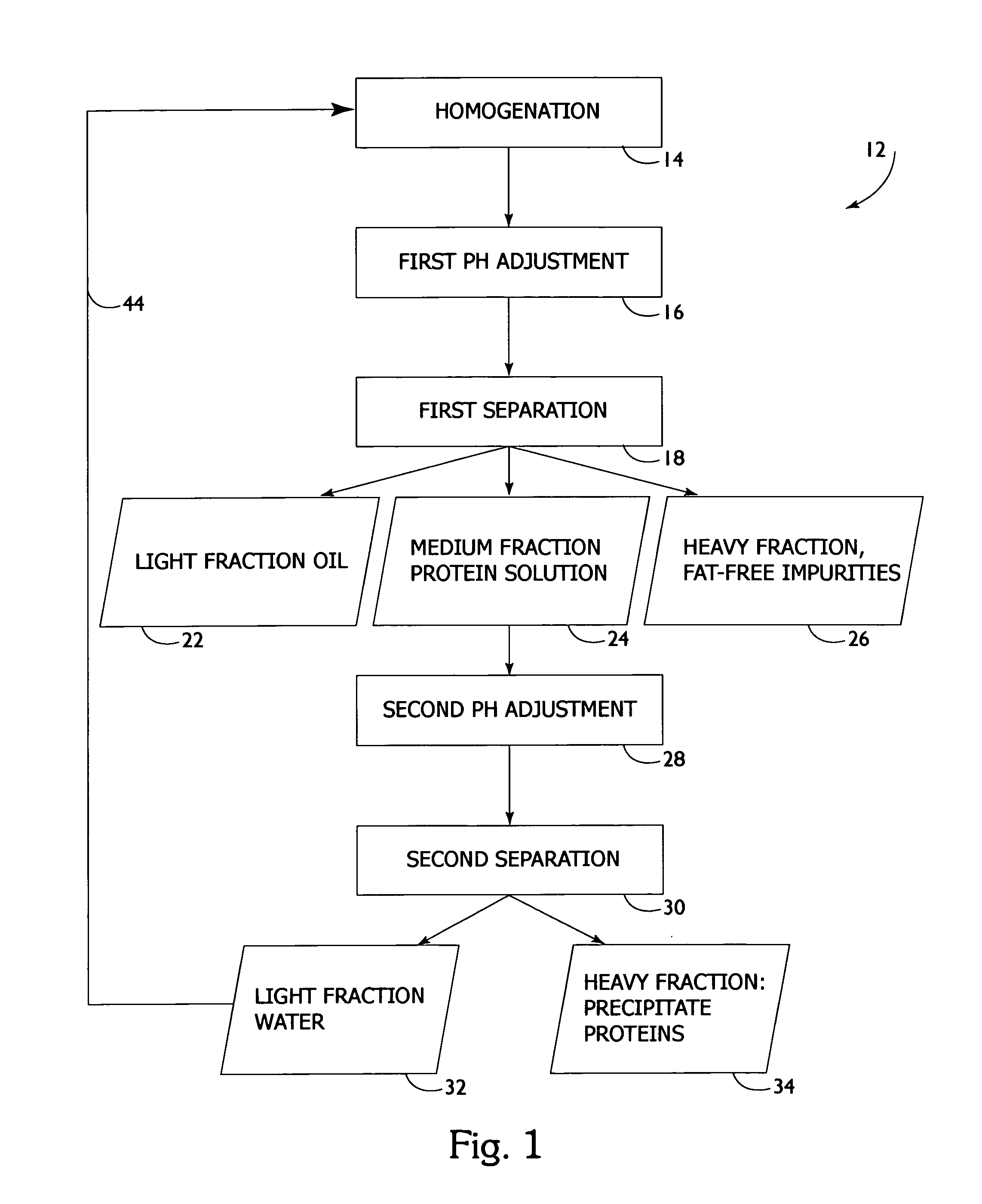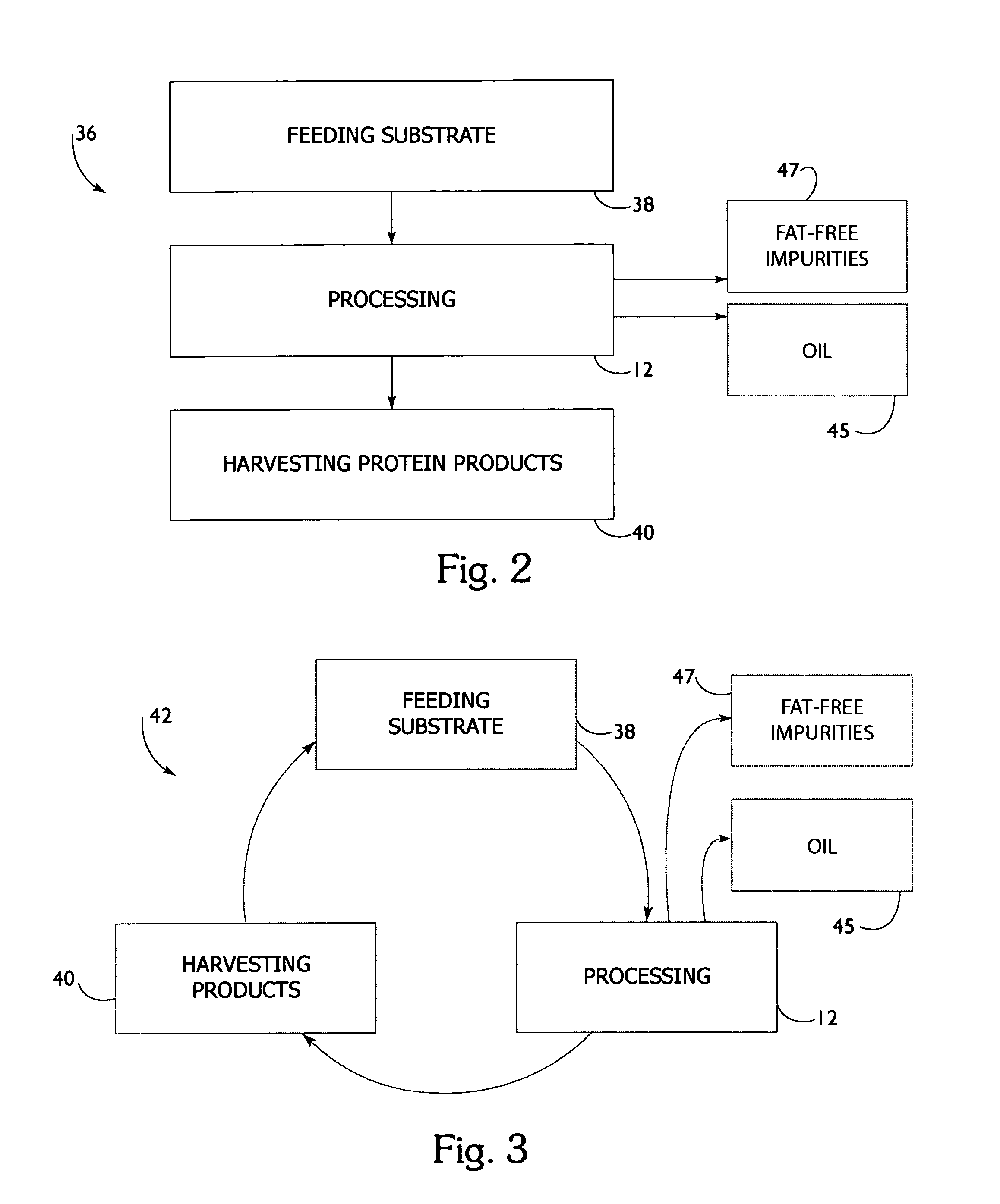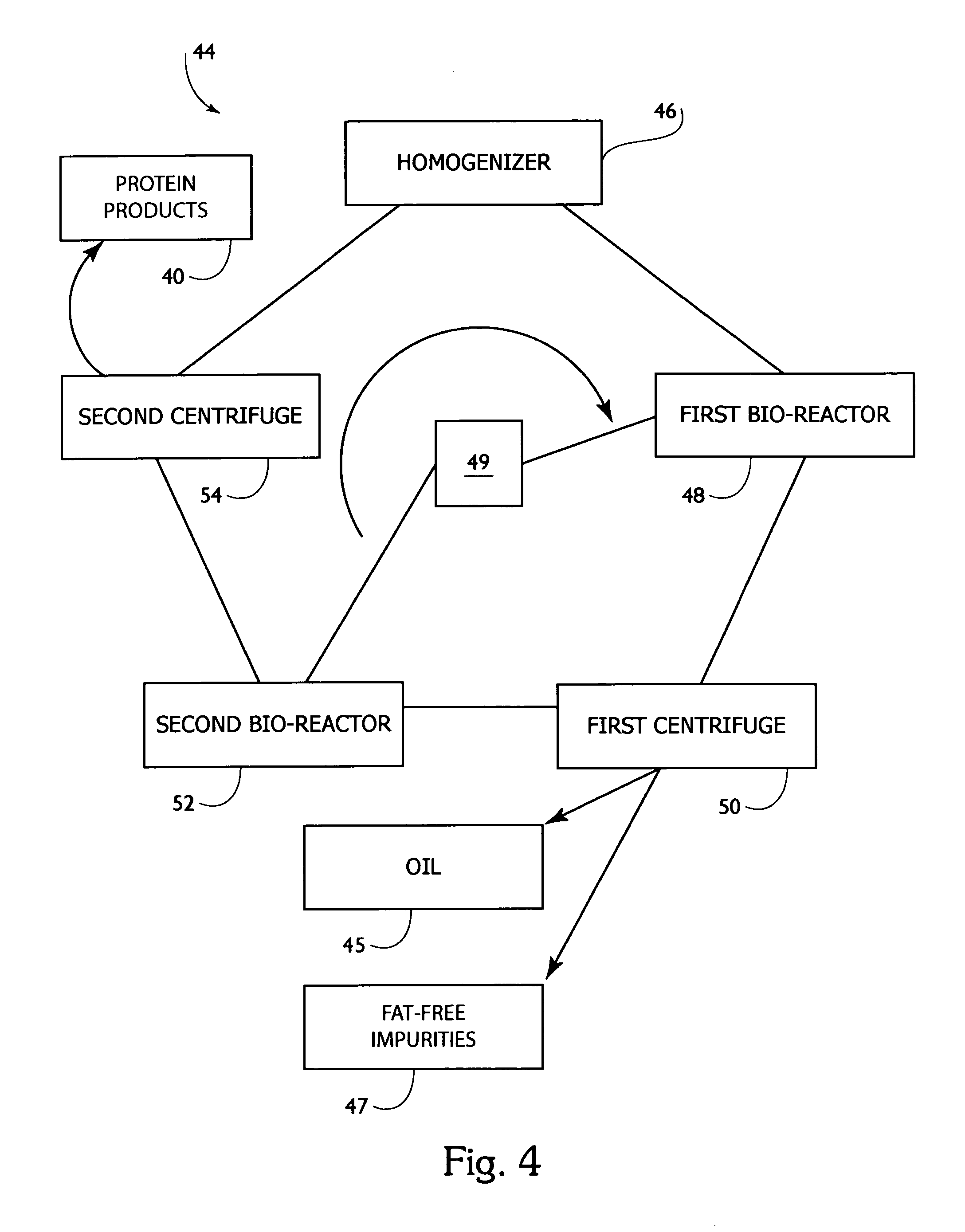Continuous protein and lipid recovery from food animal processing byproducts
- Summary
- Abstract
- Description
- Claims
- Application Information
AI Technical Summary
Benefits of technology
Problems solved by technology
Method used
Image
Examples
Embodiment Construction
[0054]The present invention shall be described herein by way of fish, and specifically trout, as an example. The procedures and products incorporated herein are effective with alternative sources of lipids and proteins, including fish and non-fish byproducts. Fish byproducts are considered most desirable because of the healthy benefits of fish oils. Limited health risks result from either human or other animal consumption of rendered fish. Rendered meat products, on the other hand, may pose elevated health risks to human and animal consumers, and further down the food chain.
[0055]FIG. 1 is a flow chart which demonstrates a process 12 of protein and lipid recovery from animal byproduct material according to the present invention. FIG. 1 shows the protein and recovery system using isoelectric solubilization / precipitation. FIGS. 2 and 3 show block diagrams of batch 36 and continuous 42 production paradigms according to the present invention. The following five steps are used to recover...
PUM
| Property | Measurement | Unit |
|---|---|---|
| Temperature | aaaaa | aaaaa |
| Temperature | aaaaa | aaaaa |
| Fraction | aaaaa | aaaaa |
Abstract
Description
Claims
Application Information
 Login to View More
Login to View More - R&D
- Intellectual Property
- Life Sciences
- Materials
- Tech Scout
- Unparalleled Data Quality
- Higher Quality Content
- 60% Fewer Hallucinations
Browse by: Latest US Patents, China's latest patents, Technical Efficacy Thesaurus, Application Domain, Technology Topic, Popular Technical Reports.
© 2025 PatSnap. All rights reserved.Legal|Privacy policy|Modern Slavery Act Transparency Statement|Sitemap|About US| Contact US: help@patsnap.com



